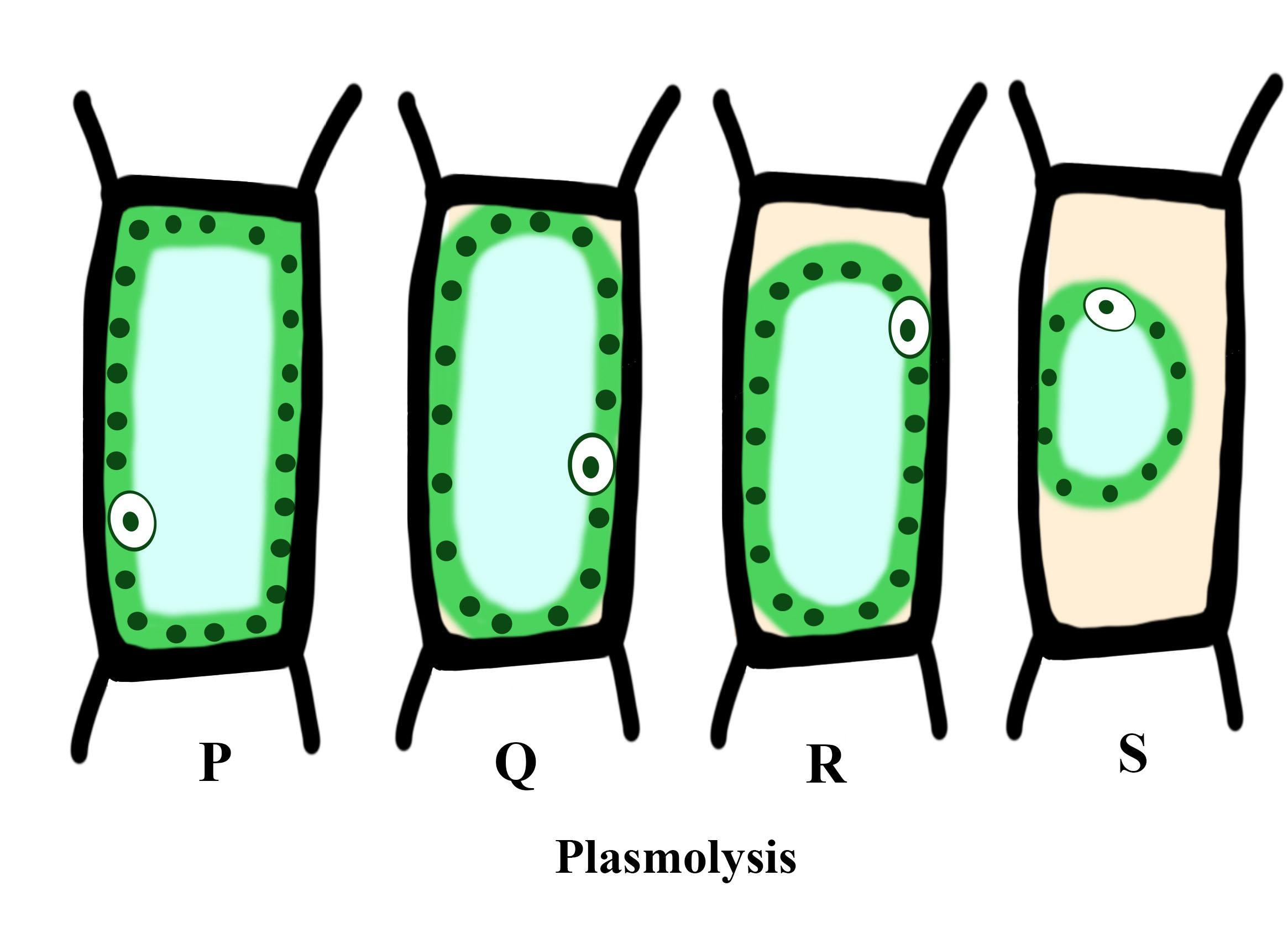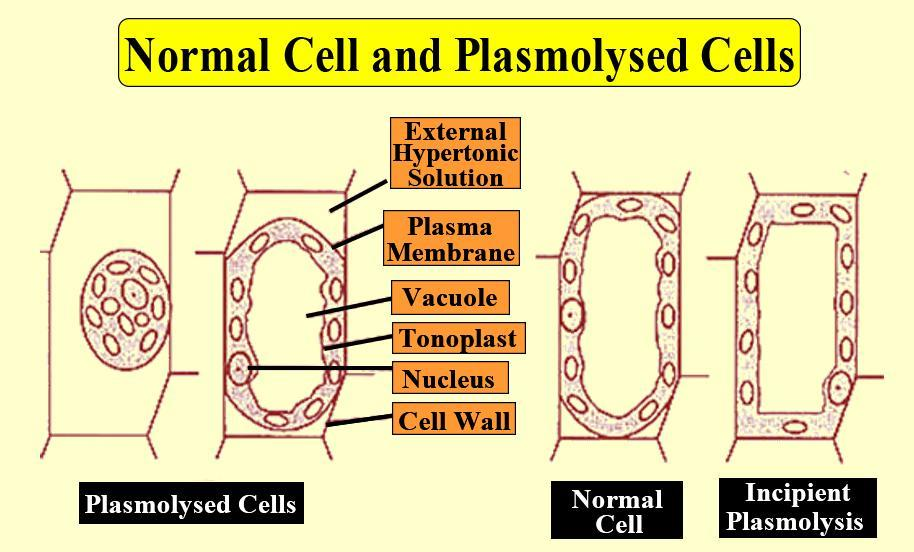
In the given diagram, which is the initial condition of plasmolysis:

(a) P
(b) Q
(c) R
(d) S

Answer
565.5k+ views
Hint: In general, the term Plasmolysis was derived from the Latin and Greek term plasma, meaning the mould and the meaning loosening arises from the word lusis. The initial or incipient plasmolysis process is the process in which the water begins to exit the cell.
Complete step by step answer:
Plasmolysis is defined as the process of contraction or shrinkage of a plant cell's protoplasm and is caused by water loss in the cell. Plasmolysis is an explanation of the effects of osmosis and is rarely observed in nature.
The cell loses water and only loses its turgidity in the initial plasmolysis state. The shape does not shift much, just the membrane of the cell stops touching the wall of the cell. This stage is represented by the picture Q. A turgid cell is represented by Image P. The middle and final stages of plasmolysis are represented by images R and S respectively.

So, the correct answer is, ‘Q’.
Additional information: Plasmolysis Stages are as follows:
In three separate steps, the full process of plasmolysis takes place.
- Incipient plasmolysis: This is the initial stage of plasmolysis, during which water begins to leak out of the cell; initially, the volume of the cell shrinks, and the cell wall becomes detectable.
- Evident plasmolysis: It is the next stage of plasmolysis during which the cell wall has reached its contraction limit and the cytoplasm is detached from the spherical form of the cell wall.
- Final plasmolysis: the third and final step of plasmolysis during which the cytoplasm is completely free from the cell wall and stays in the center of the cell.
Note: In a hypertonic solution, plasmolysis is the phase in which cells lose water. If the cell is in a hypotonic solution that results in a lower external osmotic pressure and a net flow of water into the cell, the reverse process, deplasmolysis or cytolysis, can occur. It is possible to determine the tonicity of the cell's environment by studying plasmolysis and deplasmolysis, as well as the rate of solvent molecules crossing the cellular membrane.
Complete step by step answer:
Plasmolysis is defined as the process of contraction or shrinkage of a plant cell's protoplasm and is caused by water loss in the cell. Plasmolysis is an explanation of the effects of osmosis and is rarely observed in nature.
The cell loses water and only loses its turgidity in the initial plasmolysis state. The shape does not shift much, just the membrane of the cell stops touching the wall of the cell. This stage is represented by the picture Q. A turgid cell is represented by Image P. The middle and final stages of plasmolysis are represented by images R and S respectively.

So, the correct answer is, ‘Q’.
Additional information: Plasmolysis Stages are as follows:
In three separate steps, the full process of plasmolysis takes place.
- Incipient plasmolysis: This is the initial stage of plasmolysis, during which water begins to leak out of the cell; initially, the volume of the cell shrinks, and the cell wall becomes detectable.
- Evident plasmolysis: It is the next stage of plasmolysis during which the cell wall has reached its contraction limit and the cytoplasm is detached from the spherical form of the cell wall.
- Final plasmolysis: the third and final step of plasmolysis during which the cytoplasm is completely free from the cell wall and stays in the center of the cell.
Note: In a hypertonic solution, plasmolysis is the phase in which cells lose water. If the cell is in a hypotonic solution that results in a lower external osmotic pressure and a net flow of water into the cell, the reverse process, deplasmolysis or cytolysis, can occur. It is possible to determine the tonicity of the cell's environment by studying plasmolysis and deplasmolysis, as well as the rate of solvent molecules crossing the cellular membrane.
Recently Updated Pages
Master Class 11 Economics: Engaging Questions & Answers for Success

Master Class 11 English: Engaging Questions & Answers for Success

Master Class 11 Social Science: Engaging Questions & Answers for Success

Master Class 11 Biology: Engaging Questions & Answers for Success

Class 11 Question and Answer - Your Ultimate Solutions Guide

Master Class 11 Business Studies: Engaging Questions & Answers for Success

Trending doubts
10 examples of friction in our daily life

One Metric ton is equal to kg A 10000 B 1000 C 100 class 11 physics CBSE

Difference Between Prokaryotic Cells and Eukaryotic Cells

1 Quintal is equal to a 110 kg b 10 kg c 100kg d 1000 class 11 physics CBSE

Explain zero factorial class 11 maths CBSE

What is a periderm How does periderm formation take class 11 biology CBSE




